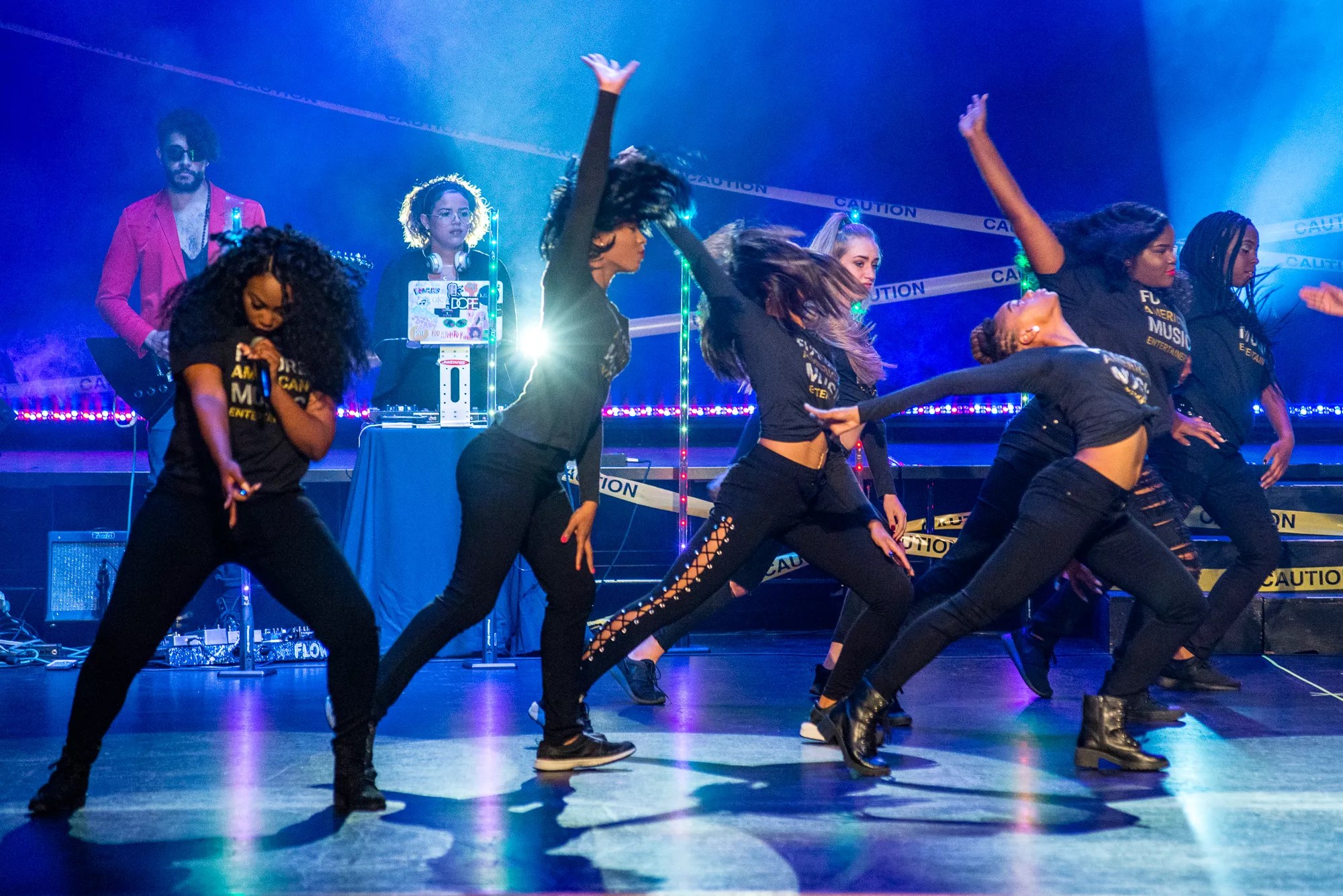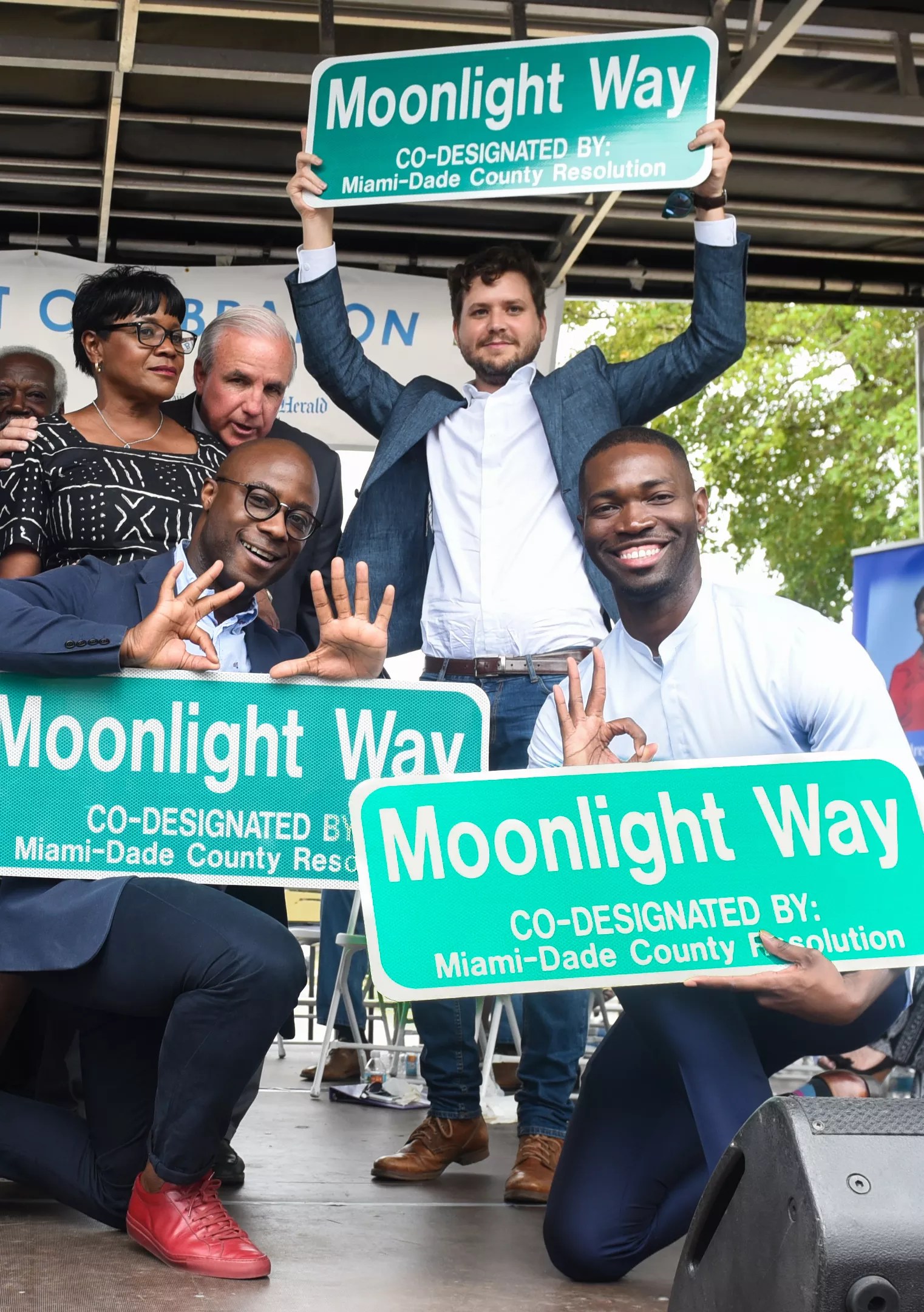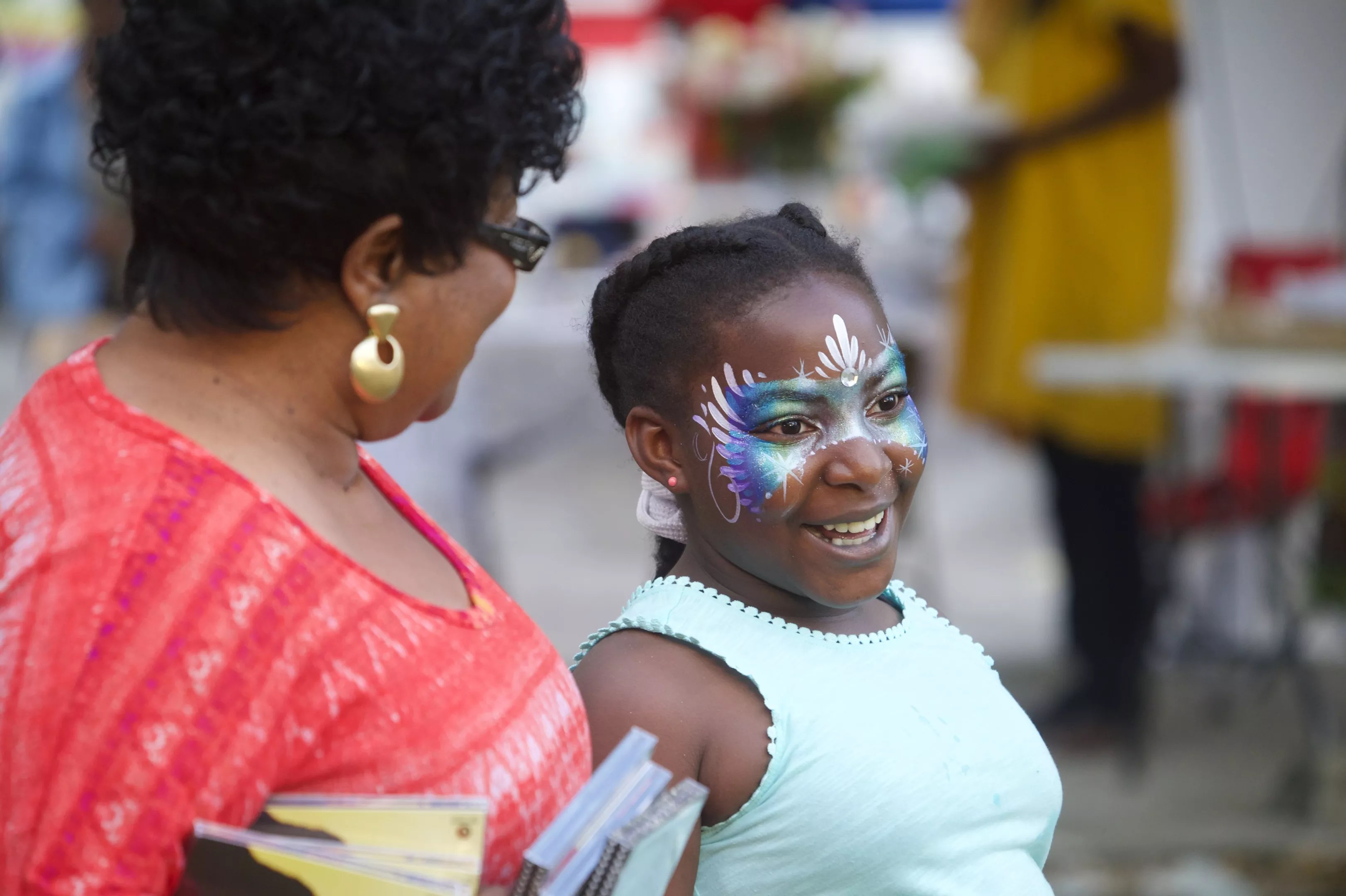
Courtesy of AHCAC

Audio By Carbonatix
Last spring, the African Heritage Cultural Arts Center celebrated a major win for one of its most esteemed alumni. Moonlight co-writer, playwright Tarell Alvin McCraney, stood proudly on the AHCAC stage holding a “Moonlight Way” sign alongside director Barry Jenkins. A street in Liberty City was being named for their film, which had just won three Oscars, including Best Picture, at the 2017 Academy Awards.
McCraney told the crowd: “We know, in Liberty City, that life doesn’t fix itself overnight. It takes hard work and dedication to get to the places we get to. A movie about that, representations about that, I hope, give permission for people to be themselves.”
The ceremony and that statement showed the power of art and community. For McCraney, both were found at the African Heritage Cultural Arts Center.
The center opened in 1975 as the Model City Cultural Arts Center, thanks to funding from President Lyndon B. Johnson. Since then, it has molded, trained, and inspired generations of creatives to be their best selves. Over the years, AHCAC has presented artists such as Eartha Kitt, Ossie Davis, Ruby Dee; held events like the Sankofa Jazz Festival; and provided a stage for cultural organizations such as Dance Theater of Harlem, National Black Theater Company, and Alvin Ailey American Dance Theater. It has acted as an incubator for Miami’s talented youths by providing them with artistic direction in all mediums.
This year, make your gift count –
Invest in local news that matters.
Our work is funded by readers like you who make voluntary gifts because they value our work and want to see it continue. Make a contribution today to help us reach our $30,000 goal!
AHCAC director Marshall Davis began working at the center in 1983. He studied to be a teacher but found himself working as an admissions officer at Florida International University. At AHCAC, he saw a recreational arts program he thought could be considered an arts academy. Davis wanted to “develop students’ talents and actualize themselves in the arts, if that’s their goal. We developed a curriculum that was empowering to them,” he says. AHCAC presented young talents and gave them the confidence to take the skills they learned through the arts to other disciplines, such as math or science. It was a win-win for the kids: They either went back to school and performed better academically or went on to find careers in the arts.

Courtesy of AHCAC
Other famous alums include Robert Battle, the artistic director of Alvin Ailey, who got his first dance experience at AHCAC; Grammy-nominated jazz trumpeter Shareef Clayton; and Bianca Brewtan, a dancer for Janet Jackson and Beyoncé. There’s also Opa-locka Commissioner Matthew Pigatt and countless others who became attorneys, nurses, and more. “Once they see they can achieve in the arts, they can take those skills elsewhere,” Davis explains.
Davis’ own chidren gained training and knowledge from the center. Marshall Davis Jr. was a 1991 teen dance champion on Star Search, worked off-Broadway, and then danced in the musical Bring in ‘da Noise, Bring in ‘da Funk. “He’s just dancing away all over the world with Savion [Glover, a Tony Award-winning choreographer, tap dancer, and actor],” his dad says proudly. His other son, Marcellus, known as Cello Davis, is a standup comedian who has been onstage with Kat Williams.
“If you don’t have the arts, you’re only teaching one part of your brain,” Davis explains. “You aren’t a whole person.” Artists, he says, “bring people together across racial and cultural lines. It provides understanding. It gives us a very dynamic way of communicating our thoughts and how we are in the world. We can arouse different thinking and feelings [in people that] they wouldn’t have otherwise.”
He saw an uptick in parents enrolling their kids at AHCAC after Moonlight‘s Oscar win. McCraney teaches there every summer alongside other staff members, a third of which attended AHCAC in their youth. The Yale professor and playwright has a special program where he works with young women to provide them with skills in the theatrical arts, dance, and playwriting “so that they can express themselves and their voices,” Davis says. An international audience has now found its way to the center in the wake of the film’s success. A Miami media company is filming a documentary about AHCAC, titled It Takes a Village. The center has also received more funding, including an NEA grant, and Jenkins and McCraney donated $20,000. Davis says the latter will be used to create a cinematic arts program.

Courtesy of AHCAC
Davis is proud of the programming he runs, such as the recent dance and music performance Entourage at Lou Rawls Center for the Performing Arts, where students showed off the vocal technique and training they learned at AHCAC for people in the music industry. The center’s Black Box African Heritage Youth Theater offered a production called Chain Reaction with a show concentrating on poverty, patriotism, the sense of color within the black community, “and also about being a vegetarian,” Davis explains. “Then you put it onstage; it really pops.” The Summer Arts Conservatory ten-week program gives kids a head start in the arts. This September, the center will launch Color Museum, a theatrical production by George C. Wolfe.
“Working with the children is definitely one of the high points of working here,” Davis concludes. “And despite the awards I have received, nothing is more precious than seeing a child you work with improve their lives and be distinguished for whatever reason. It’s a heart-warming feeling when they return to the center and say, ‘Thank you.'”